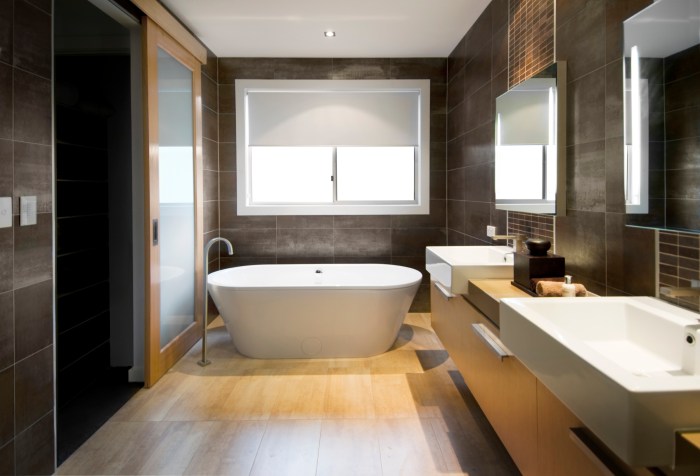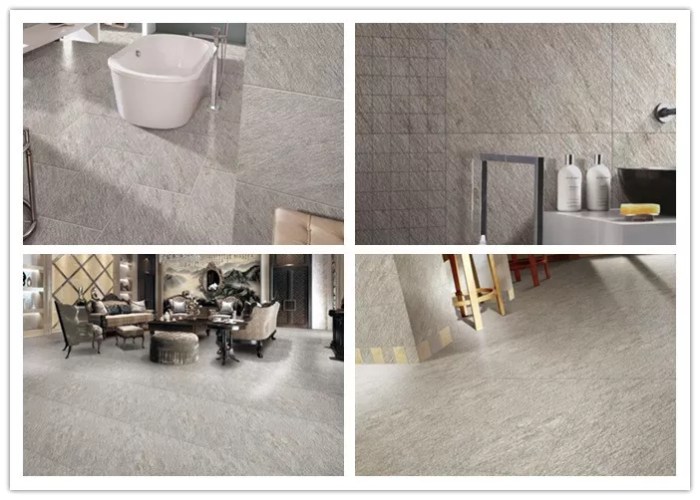Maintaining a pristine bathroom can be a challenge, especially in high-use areas like showers and floors. Stain-resistant tiles offer a practical and stylish solution to this problem, providing lasting beauty and ease of maintenance. In this comprehensive guide, we’ll delve into the types of stain-resistant tiles available, their features, installation and maintenance considerations, and inspiring design options to help you create a bathroom that combines functionality and aesthetics.
From understanding the different types of stain-resistant tiles to exploring the latest design trends, this guide will equip you with the knowledge and insights to make informed decisions about your bathroom renovation or new construction project.
Types of Stain-Resistant Tiles
Stain-resistant tiles are a smart choice for high-use bathrooms, as they can withstand spills and splashes without showing signs of wear. There are several types of stain-resistant tiles available, each with its own unique advantages and disadvantages.
The most common type of stain-resistant tile is ceramic tile. Ceramic tiles are made from clay and are fired at a high temperature, making them durable and easy to clean. They are also available in a wide variety of colors and styles, so you can find the perfect tile to match your bathroom décor.
Porcelain Tiles
Porcelain tiles are another type of stain-resistant tile that is similar to ceramic tiles. However, porcelain tiles are made from a finer clay and are fired at a higher temperature, making them even more durable and stain-resistant than ceramic tiles.
Porcelain tiles are also available in a wide variety of colors and styles, but they tend to be more expensive than ceramic tiles.
Glass Tiles
Glass tiles are a third type of stain-resistant tile that is becoming increasingly popular. Glass tiles are made from recycled glass and are fired at a high temperature, making them durable and easy to clean. They are also available in a wide variety of colors and styles, including transparent, opaque, and iridescent tiles.
Glass tiles tend to be more expensive than ceramic or porcelain tiles, but they can add a touch of luxury to your bathroom.
Features to Consider
When selecting stain-resistant tiles for high-use bathrooms, consider key features that contribute to their performance and durability:
Water Absorption Rate: Measures the tile’s ability to absorb water. Low water absorption rates indicate greater stain resistance, as less liquid penetrates the tile’s surface.
Slip Resistance
Slip resistance is crucial in bathrooms, where wet surfaces pose a safety hazard. Tiles with higher slip resistance coefficients (COF) provide a safer footing, reducing the risk of slips and falls.
Scratch Resistance
Bathrooms are prone to wear and tear from foot traffic and cleaning. Tiles with high scratch resistance withstand abrasions, maintaining their appearance and functionality over time.
Chemical Resistance
Bathroom cleaners and harsh chemicals can damage tiles. Choose tiles with high chemical resistance to prevent stains, discoloration, and degradation.
Installation and Maintenance
Installing stain-resistant tiles in a bathroom requires careful preparation and proper techniques. Here’s a detailed guide to ensure a successful installation:
Subfloor Preparation
Before laying tiles, ensure the subfloor is level, smooth, and free of moisture. Leveling compounds or plywood underlayment may be necessary to correct any unevenness. Moisture barriers, such as plastic sheeting or moisture-resistant membranes, should be installed to prevent water penetration and potential damage to the tiles.
Tile Installation
Spread a thin layer of thin-set mortar onto the prepared subfloor using a notched trowel. Place the tiles onto the mortar, pressing firmly to ensure good adhesion. Use tile spacers to maintain uniform grout lines. Allow the thin-set mortar to cure according to the manufacturer’s instructions.
Grouting
Once the tiles are set, apply grout to the spaces between them. Choose a grout that is stain-resistant and matches the color of the tiles. Use a grout float to spread the grout into the joints, removing any excess. Allow the grout to dry and cure before sealing.
Maintenance
Regular cleaning and sealing are crucial for maintaining the stain resistance of tiles. Use a mild detergent or specialized tile cleaner and avoid abrasive cleaning agents. Seal the tiles periodically, following the manufacturer’s recommendations, to enhance their stain resistance and protect against moisture damage.
Design Considerations
When selecting stain-resistant tiles for high-use bathrooms, consider the overall design aesthetic you want to create. Various design options can impact the ambiance and functionality of the space.
Tile Size and Shape
The size and shape of the tiles can influence the overall look and feel of the bathroom. Smaller tiles, such as mosaics, create a more intricate and detailed look, while larger tiles give a more modern and minimalist feel. Geometric shapes like hexagons or octagons add a touch of uniqueness and interest.
Tile Color
The color of the tiles plays a significant role in setting the mood of the bathroom. Neutral colors like white, gray, or beige provide a timeless and versatile backdrop, allowing for easy coordination with other bathroom fixtures and accessories. Bold colors like navy or emerald green can create a dramatic and sophisticated ambiance.
Tile Pattern
Tile patterns can add visual interest and depth to the bathroom. Subway tiles in a classic brick pattern create a timeless look, while herringbone or chevron patterns add a touch of elegance. Mosaic tiles can be arranged in intricate geometric designs or used to create decorative borders.
Case Studies and Examples
To showcase the effectiveness of stain-resistant tiles in high-use bathrooms, let’s explore some successful installation case studies.
These examples demonstrate the tiles’ ability to withstand spills, stains, and heavy foot traffic, ensuring a pristine and hygienic bathroom environment.
Real-World Installation Examples
- Residential Bathroom Renovation: A family of four installed stain-resistant tiles in their frequently used bathroom. Before the renovation, the bathroom floor was prone to unsightly stains from spilled toothpaste, hair dye, and makeup. After installing the tiles, the family noticed a significant improvement in the bathroom’s cleanliness and ease of maintenance.
- Commercial Gym Facility: A fitness center with high foot traffic chose stain-resistant tiles for their locker rooms and showers. The tiles proved highly effective in resisting sweat, body oils, and harsh cleaning chemicals, maintaining a hygienic and professional appearance.
Before-and-After Transformations
Visual evidence of the transformative power of stain-resistant tiles is captured in before-and-after photos and videos.
- Bathroom Remodel: A before-and-after video shows a bathroom floor that was once discolored and stained. After installing stain-resistant tiles, the floor appears spotless and pristine, even after heavy use.
- Shower Renovation: A homeowner replaced their old shower tiles with stain-resistant ones. The new tiles have significantly reduced the buildup of soap scum and mildew, making the shower easier to clean and maintain.
Customer Testimonials
Satisfied customers have shared their positive experiences with stain-resistant tiles in high-use bathrooms.
“I love my new stain-resistant tiles! They’ve made my bathroom so much easier to keep clean, and I no longer have to worry about spills or stains.”
Sarah J.
“I installed stain-resistant tiles in my gym’s locker rooms, and they’ve been a game-changer. They’re easy to clean and maintain, and they’ve helped to create a more hygienic environment for our members.”John B.
Summary
Choosing the right stain-resistant tiles for your high-use bathroom is an investment in both style and practicality. By considering the factors Artikeld in this guide, you can select tiles that not only enhance the aesthetics of your bathroom but also withstand the daily rigors of a busy household.
Remember, a well-maintained bathroom with stain-resistant tiles will provide years of enjoyment and effortless upkeep.



